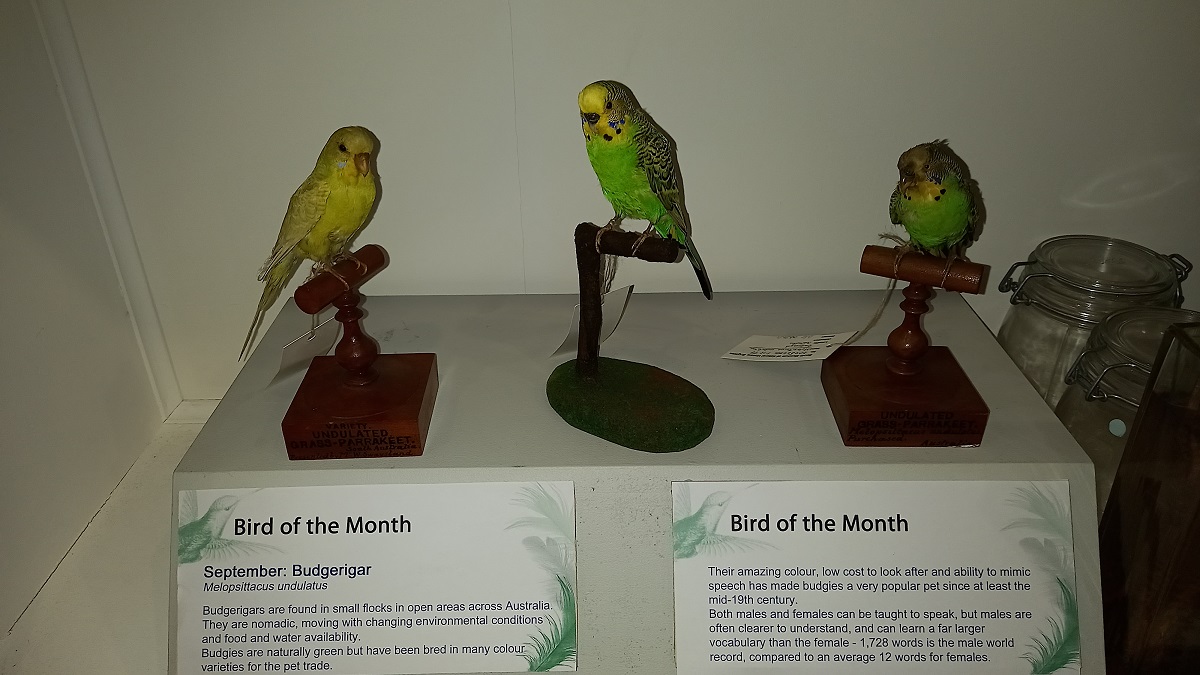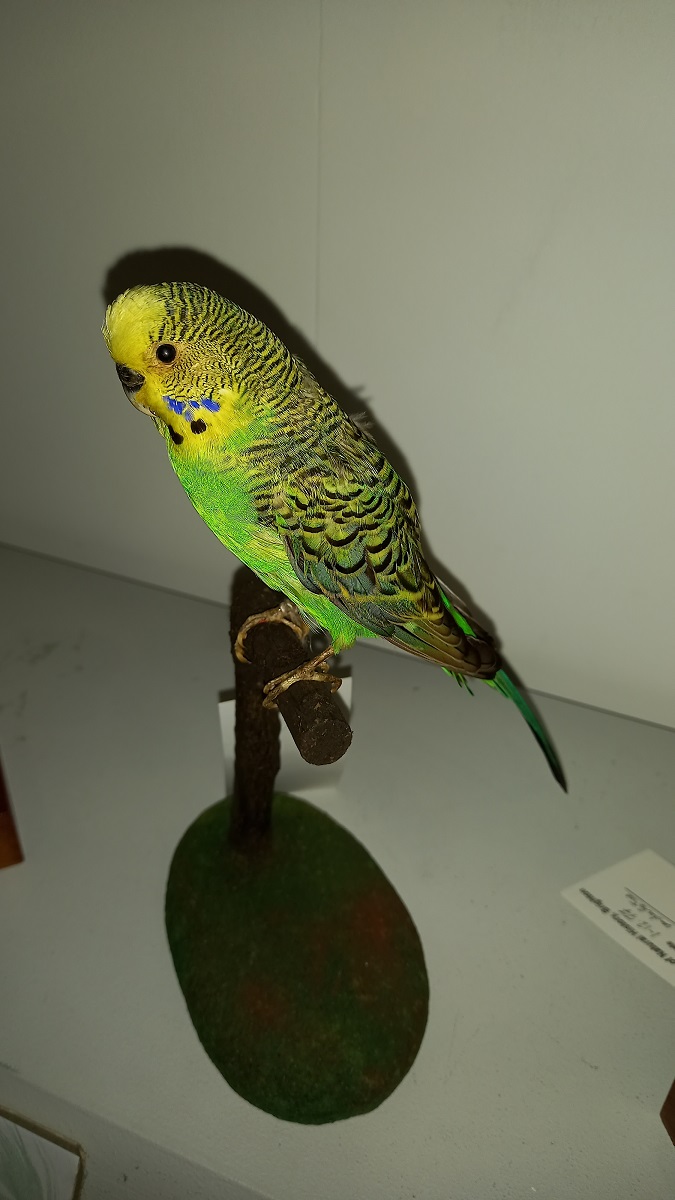Booth Bird of the Month: September – Budgerigar or the common parakeet

Budgerigar or the common parakeet (Melopsittacus undulatus)
Our bird of the month for September is on display at the Booth Museum of Natural History.

Budgerigars are native to Australia, found in small flocks in open areas like woodlands and scrublands. They are nomadic, moving from site to site depending on environmental conditions and how readily available food and water is, mainly eating a diet of grass seed. However, with the right conditions it is possible for them to form very large flocks moving to more wooded or coastal areas if there is drought.
‘Budgies’ as they are popularly called, are naturally green with yellow and black markings, but in captivity they have been bred to have colours of blue, yellow, grey, violet, and white. Budgies in captivity tend to be larger than those in their natural habitat.
Their amazing colour, low cost to look after and ability to mimic speech has made budgies a very popular pet since at least the mid 19th century, with budgerigar fossils dating back 50,000–70,000 years!
Both male and female can be taught to speak, sing and whistle but the male’s words and song are often clearer to understand than the female. They also have the ability to learn a far larger vocabulary than the female’s vocabulary- up to a dozen for the female but anywhere up to a hundred words for a male. A famous world record male budgerigar called Puck holds the record for largest vocabulary, a mere 1,728 words!